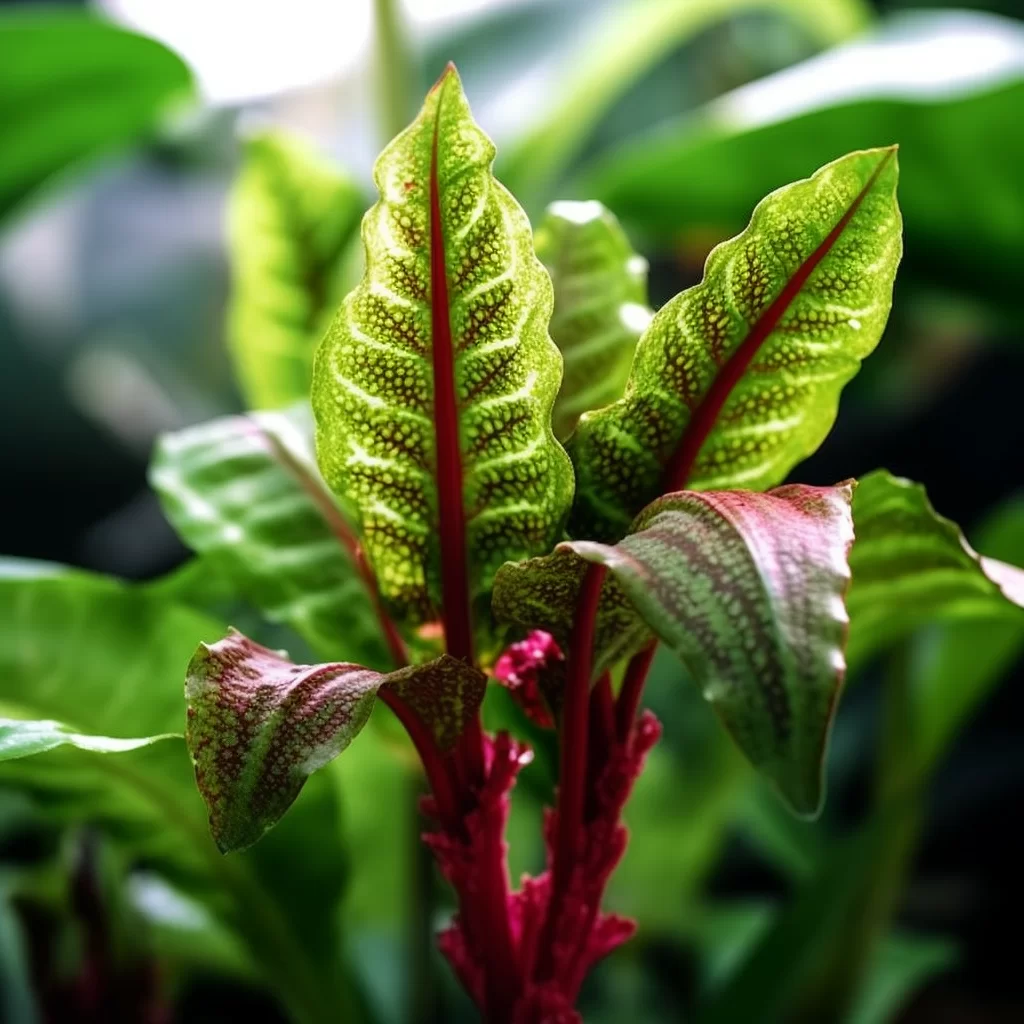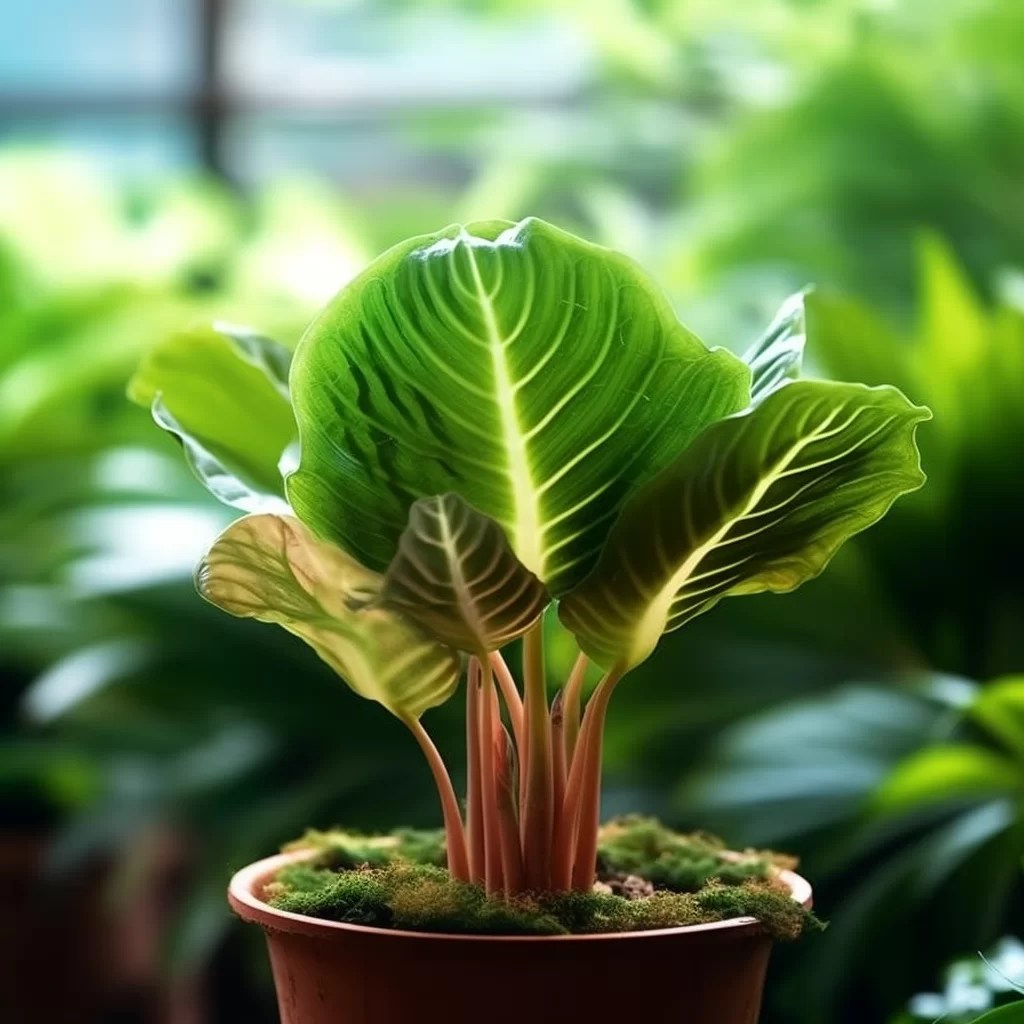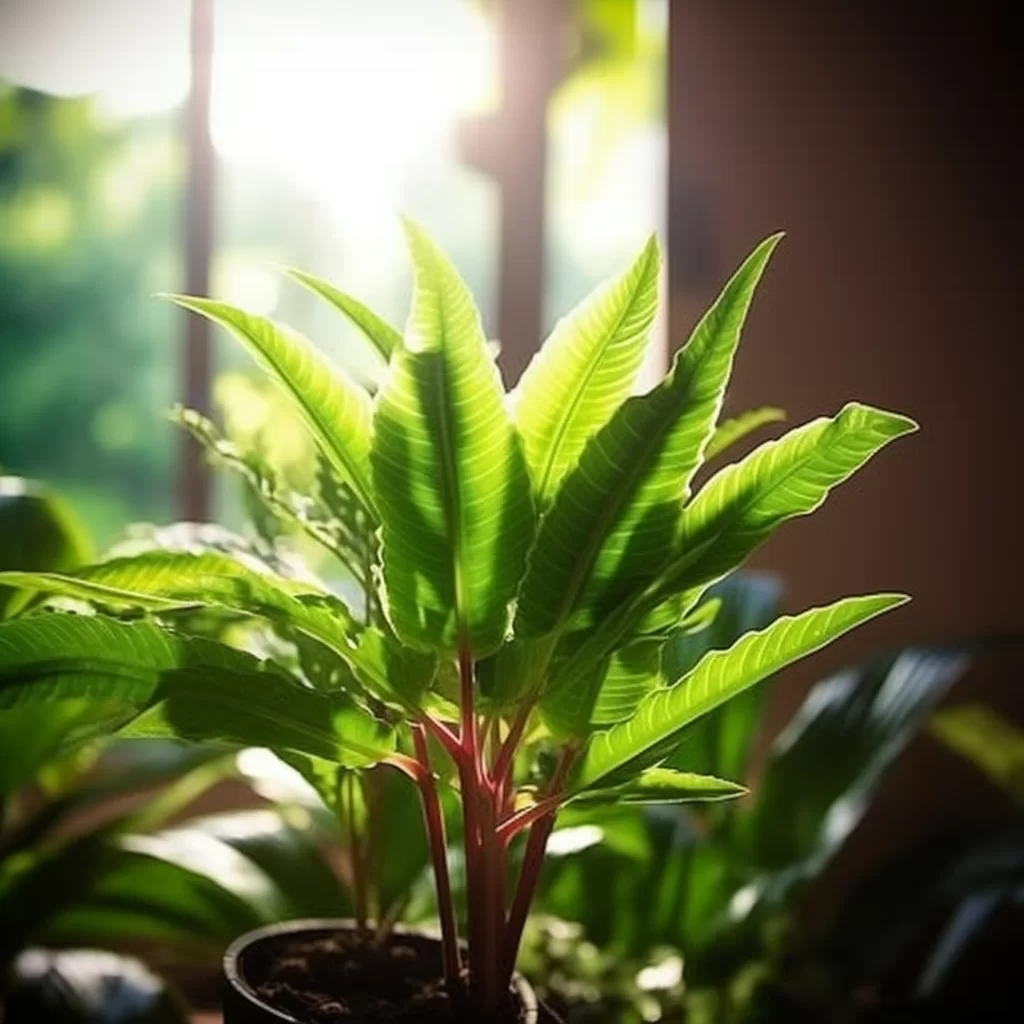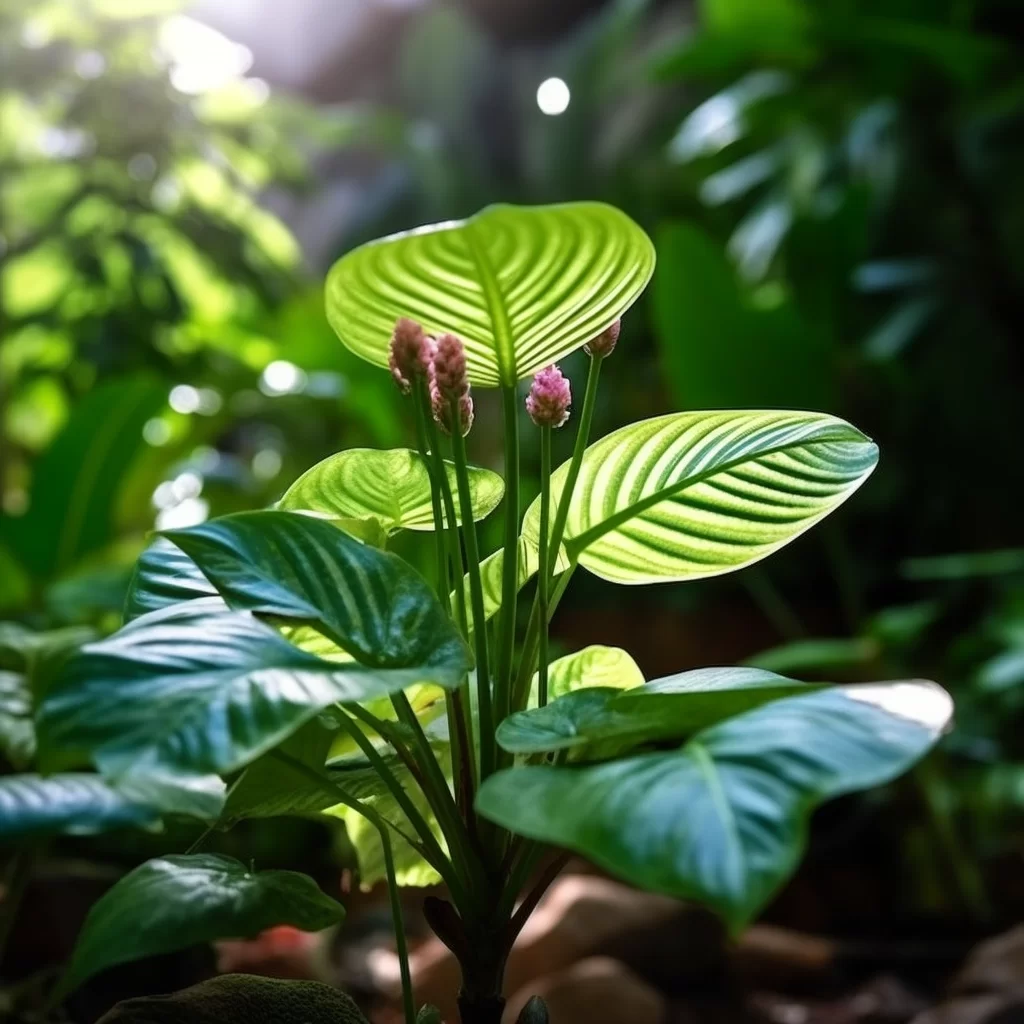Story of Day :
Contents
The Homalomena Plant: A Complete Guide and Care Tips
For those of us who adore plants, the Homalomena is certainly a gem worth discovering.
This beautiful tropical plant boasts marvelous leaves that come in an array of green hues, making it an excellent addition to any home or garden.
If you’re looking for a way to enhance your space with a touch of the tropics, the Homalomena is an ideal choice.
In this article, we’ll dive into everything you need to know about caring for your Homalomena plant, from watering and lighting requirements to soil preferences and propagation techniques.With its vibrant foliage and easy-to-care-for nature, there’s no wonder why so many plant lovers are raving about the Homalomena.
Whether you’re new to gardening or have been nurturing plants for years on end, this stunning species is sure to impress! So if you’re eager to learn more about how best to care for your beloved Homalomena plant and keep it thriving well into the future – read on!
What is a Homalomena Plant?
The Homalomena plant is a member of the Araceae family, which is native to Southeast Asia.
This plant can be found all throughout rainforests and has the ability to grow up to 3 feet tall.
Its leaves are unique, with a shiny appearance, heart-like shape and noticeable veins that run through them.
These leaves can grow up to 12 inches long and add an element of beauty wherever they’re found. The Homalomena plant is a fascinating species that comes from Southeast Asia and belongs to the Araceae family.
The Homalomena plant is a fascinating species that comes from Southeast Asia and belongs to the Araceae family.
It’s primarily found in dense rainforests across this region and has been known to sprout up as high as 3 feet off of the ground.
Interestingly enough, its defining feature are its lustrous leaves which resemble hearts in shape with clear veins running throughout them.
At their peak growth stage these striking leaves can reach lengths of up to 12 inches long which only adds further depth in terms of aesthetic value for those who come across it during their travels or at home gardens alike!
How To Care For Your Homalomena Plant
Taking care of your Homalomena plant is a simple task that requires minimal effort.
However, giving it the attention it needs is vital for its optimal growth and health.
Like any other living being, plants require certain conditions to thrive and flourish, and your Homalomena is no exception.To ensure your Homalomena thrives well, you need to provide it with adequate sunlight exposure, water it regularly but avoid overwatering or underwatering.
Furthermore, maintaining a consistent temperature in the environment where the plant is kept will also help keep its leaves lush green and healthy.
With these few necessary steps, you can enjoy watching your Homalomena grow into a beautiful houseplant that will undoubtedly add beauty to any space!

Lighting
- The ideal lighting conditions for your Homalomene plant are bright but indirect sunlight.
- Avoid placing it in direct sunlight as it can burn its leaves.
- If you notice that the leaves turn yellowish-green or brownish-green, it may be an indication that there’s too much light exposure; move them away from direct light sources immediately..
If you want your Homalomena plant to grow and thrive, pay attention to the temperature and humidity levels it is exposed to.
Ideally, the temperature should be within 60-80°F (16-27°C), which means that you need to avoid placing it directly under air conditioning or heating vents.
These can dry out the leaves of your plant and prevent optimal growth.
Additionally, high humidity is crucial in creating an ideal environment for your Homalomena plant.
It would be best if you aimed for a humidity level of at least 60% as this will ensure the best conditions for growth.In summary, maintaining suitable temperatures and humidity levels are essential when growing a Homalomena plant successfully.
You should keep the temperature between 60-80°F (16-27°C) and avoid exposing it directly under air conditioning or heating vents.
Moreover, ensure that there is sufficient moisture in the air by keeping a humidifier nearby or misting regularly to maintain a minimum of 60% humidity level around its environment for optimal growth conditions of your Homalomena plant.
Watering
- The Homalomena plant needs consistent moisture, but it doesn’t like wet soil.
The trick is to keep the soil moist but not soaked through frequent watering.
- Ensure that the top inch of soil is dry before watering your plant again.
- Avoid overwatering as it can cause root rot and damage your plants severely.

Fertilization
If you’re looking for a low maintenance plant that doesn’t require constant fertilization, then Homalomena is the plant for you! Even though they don’t need frequent fertilizing, it’s important to give them a little boost during their active growth season in spring and summer.
Providing occasional feedings during these months will help your plant thrive even more.
Mixing an all-purpose fertilizer with water at half strength every four weeks is a great way to keep your Homalomena healthy and happy.By providing the right amount of fertilizer at the right time, you can ensure that your Homalomena stays healthy without requiring too much effort on your part.
So why not add one to your indoor garden today? With its unique foliage and easy-to-care-for nature, this tropical plant is sure to bring new life into any space!
Pests and diseases are a major concern for farmers and gardeners alike.
These threats can cause devastating damage to crops, leading to lower yields and financial losses.
Pests like insects, rodents, and birds can consume or damage plants, while diseases such as viruses, bacteria, fungi, and nematodes can cause wilting, stunted growth or even death of the plant.
As plants are an essential source of food for humans and animals alike, it is imperative that we find ways to combat these threats. Fortunately, there are many methods available for preventing pests and diseases from wreaking havoc on crops.
Fortunately, there are many methods available for preventing pests and diseases from wreaking havoc on crops.
Some strategies include crop rotation to prevent the buildup of disease-causing organisms in the soil; planting pest-resistant varieties; using natural predators like ladybugs or praying mantises; applying pesticides judiciously when necessary; maintaining proper irrigation practices to avoid water stress on plants (which makes them more vulnerable to disease); practicing good sanitation by removing dead plant material promptly; pruning diseased areas out of trees or bushes before they spread further throughout the plant.
By taking a proactive approach towards pest control in our agricultural practices we minimize risks while maximizing yields.
Homalomena plants are a beautiful addition to any indoor space, but they do come with some common issues.
It’s essential to keep a regular check on your plant’s leaves and stems for any infestation signs.Spider mites appear as small white or red spots on the leaves, while mealybugs look cotton-like patches on stems and leaves.
If you find any of these pests attacking your homalomena plant, it’s best to remove them immediately.
You can do this by wiping them off with a damp cloth dipped in soapy water or use natural pest control methods like neem oil spray that is effective against both spider mites and mealybugs.
Taking timely action can help ensure the health of your homalomena plant and prevent further damage caused by these pesky insects.
To sum up, the conclusion is an integral part of any piece of writing.
It provides closure to the reader by summarizing the main points and reiterating the thesis statement.
The conclusion also serves as a call to action, urging readers to take further steps or consider new perspectives on the topic.
A well-written conclusion can leave a lasting impact on the reader, helping them understand why the topic is important and how it relates to their lives.
Therefore, writers must craft their conclusions thoughtfully and carefully in order to leave a positive impression on their audience.In addition, it’s important to note that while conclusions are typically brief in length compared to other sections of a paper or article, they should not be neglected or rushed through.
In fact, some argue that a strong conclusion can elevate an otherwise average piece of writing into something exceptional.
So whether you’re crafting an essay for school or drafting content for your blog or website, remember that your conclusion plays an essential role in leaving a lasting impression on your readership.
If you’re in search of a tropical plant that is effortless to maintain, then the Homalomena Plant might be the perfect choice for you! As long as it is given adequate lighting, temperature and humidity control, coupled with consistent watering and occasional fertilization, this plant will thrive beautifully.
To avoid any pest infiltration from bugs such as spider mites and mealybugs, inspecting your Homalomena Plant regularly is recommended.In summary, owning a Homalomena Plant can be an incredibly achievable task even for beginners.
With just a few easy-to-follow care instructions like proper lighting and water management, along with occasional fertilization and regular checking for pests; anyone can keep this tropical beauty thriving at home!
Congratulations! You now have the necessary tools to care for your tropical plant.
With this newfound knowledge, you can confidently add it to your collection without fear of neglect or failure.
Remember to keep an eye on its water and sunlight needs, perhaps even setting a reminder on your phone or calendar.
Nurturing this beautiful wonder will not only add character and life to your home but also provide a sense of accomplishment and pride in successfully caring for a living thing.Adding plants to one’s personal space has been scientifically proven to increase overall well-being by reducing stress levels, improving air quality, and boosting productivity.
Take advantage of these benefits by expanding your greenery collection with this tropical beauty! Not only will it enhance the aesthetic appeal of any room but also serve as a visual reminder of nature’s beauty that can thrive even indoors under proper care.
So grab that watering can and set up those indoor grow lights – it’s time to add some lushness into your life!